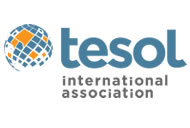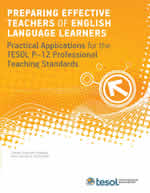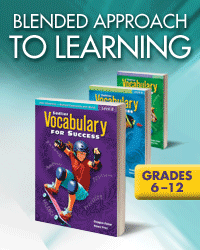Using Blogs for English Language Teaching
by Kristina Scholz
 Incorporating blogs into a language class can be a fun and interactive way to have students practice their writing. Blogs not only allow for individualized expression, but as students become more and more familiar with technology, they are an easy way to communicate and share learning. Incorporating blogs into a language class can be a fun and interactive way to have students practice their writing. Blogs not only allow for individualized expression, but as students become more and more familiar with technology, they are an easy way to communicate and share learning.
Doing anything in a language that is not your own often leads to raised affective barriers, and this is very much true for the skill of writing. As students progress with their language learning, there is often a greater need for them to practice. Due to the approachability of the blogging medium, the creativity possible, and the focus on the self, blogs are fairly casual and are excellent places to practice language production. As with most projects, it is important to know your objectives and goals before beginning an activity. These activities can be adapted for students of all ages, levels, and programs. The bottom line is to simply have the students write.
Goals
The two primary goals for these activities are to engage the students in writing as much as possible and for the students to have fun. Structuring the classes as 50/50 lessons (half the class time spent being creative and the other half spent being productive) achieves both of these goals. The creative 50% comes from a cohort of Websites, listed in the Activities section of this article, which students can use as a basis for generating something uniquely their own. The productive 50% comes from the students writing about what they have created, given the directions of the activity.
Objectives
The objective of each class should be clear: to create something visual and to produce some writing. Both you and your students will know these objectives are reached when it is evidenced in their blogs. Because each student has his or her own blog, the onus is on them to meet the class objectives. This allows them to focus exclusively on their own work, and that allows you to float around the room, acting as a facilitator rather than a lecturer. In terms of the visual aid, preselect Websites that the students can use to create something and post it to their blog. (Some sample Websites are provided in the Activities section.) With these, the objective is that students will manipulate the creative aspect and incorporate it into their writing. Websites should be chosen based on how interactive they are, and how easy it is for students to use them to create something that is uniquely their own. These Websites are visual creative outlets for the students. And because the bottom line is having students write, there is little emphasis on the revision process—just a focus on the production process.
Activities
Each student is in charge of his or her own blog and work. The lessons work best when they are self-paced. It can help to use a teacher’s sample blog (http://piesample.blogspot.com/) to give directions for the day’s activities and to model outcomes.
These activities represent six genres of writing that reflect the writing that the students are likely to encounter in a university academic setting, but these can be modified to any specific learning environment. The Websites presented as samples here provide creative input for their focused writing, but you should feel free to choose your own samples based on the genres of writing that are relevant to your students. Using your teacher’s sample blog, write down the directions for each activity, give the appropriate links, and provide a sample of what the visual and writing can look like. Then, during the class, students should complete their own version of the activity.
Here is a list of six genres of writing, and the focus of the written production, the activity, and the accompanying visual for each genre:
Profiles
Production focus: Writing for a public audience
Activity: Have students register and modify their personal blogs so that it reflects themselves. Pay special attention to the writing need for the profile section.
Visual: Have students create an avatar:
Blogger
Wordpress |
Reporting
Production focus: Giving information
Activity: Have students write about an event (real or fiction) giving information about who, what, when, where, why, and how.
Visual: Have students format their writing into a newspaper:
Fodey.com |
Evaluate
Production focus
• Making a suggestion or recommendation
• Using descriptive language
Activity: Have students chose a YouTube clip from their favorite song, movie, or TV show. Then have them write about when they first heard/saw it, why it is their favorite, and why (and to whom) they would recommend it.
Visual: Have students share a favorite clip:
YouTube |
Supposition
Production focus
• Using the future tense, conditionals
• Creative writing
Activity: After designing their own superheroes, have students write about the powers of the hero, and what the hero would do.
Visual: Have students create their own superhero:
Ugo |
Descriptive
Production focus
• Describing what has happened
• Predicting what will happen
• Making inferences
Activity: Assign students a famous painting. Have them write about what the painting depicts, what may have happened, and what may occur.
Visual: Have students write about famous paintings:
The Art Institute of Chicago |
Reflective
Production focus
• Writing about feelings, emotions, learning
• Metacognition
Activity: Have students write a reflection about their work in the course, what they learned, how they think they have improved, and what they feel they still can work on.
Visual: Have students organize their own visual:
Wordle |
Outcomes
When the course is over, each student will have a digital record of the work they produced. More important, this project will give them each the chance to practice their writing in a fun environment where the stakes and their affective barriers are low.
Considerations
It should be noted that while the activities are fairly straightforward, there are often technical issues that you may have to address. Teachers using blogs should have some familiarity with the technology and be ready to address any issues that may arise. Two of the most common issues are forgotten passwords and broken Websites. If you are not prepared to deal with technical issues, make sure you have a backup lesson plan prepared!
Also, please be sure to discuss Internet safety before beginning any online activity, and copyright rules and considerations as well.
_____________________________
Kristina Scholz earned her MA TESL from Northern Arizona University and is now an ELL assessment specialist at Educational Testing Service. Her interests are in technology in the classroom and adult education programs.
TC Monthly Giveaway
|

|
This month, TESOL is giving away
a free membership renewal! |
Take advantage of all the benefits TESOL has to offer for another year—on us!
Click here to enter
Contest open to current members only. Membership renewal is good for 1 year only, and has up to a US$95 value. TESOL Blogs Check out the latest TESOL Blogs:
|
The First Step in the Job Hunt: Join Your Professional Organization, by Sandra Rogers
 March means that it’s time for the annual conference and time to renew my membership. Since I won’t be attending the TESOL convention this year, I know that with my membership, I can keep abreast of the latest research in the field, training opportunities, and job announcements. For example, when I first joined, they asked me to select from the various interest sections and listserves. Nowadays, the listserve is called the TESOL Community and continues to provide answers to members’ questions electronically. I learn so much from following the discussion. Read More. March means that it’s time for the annual conference and time to renew my membership. Since I won’t be attending the TESOL convention this year, I know that with my membership, I can keep abreast of the latest research in the field, training opportunities, and job announcements. For example, when I first joined, they asked me to select from the various interest sections and listserves. Nowadays, the listserve is called the TESOL Community and continues to provide answers to members’ questions electronically. I learn so much from following the discussion. Read More.
|
|
Global resources and leadership development in ESP, by Kevin Knight
 During the IATEFL and TESOL discussion hosted by 12 ESP leaders that I mentioned in my previous post, we saw ourselves as participating in a “global potluck party to which everyone in the world was invited.” During the IATEFL and TESOL discussion hosted by 12 ESP leaders that I mentioned in my previous post, we saw ourselves as participating in a “global potluck party to which everyone in the world was invited.”
During this post, I would like to utilize this metaphor of the sharing of “food” (i.e., ESP resources) as we create a “menu” for what will be served to visitors in the ESP Dream Center. In other words, what kind of “food” do want to have at the party? Read More. |
|
What’s happening with TESOL Affiliates worldwide? Find out in Philadelphia!, by Evelín Ojeda N.
 Have you ever wondered what TESOL affiliates are doing to enhance ELT in their regions around the world? If so, Philadelphia is the place to answer that question! Have you ever wondered what TESOL affiliates are doing to enhance ELT in their regions around the world? If so, Philadelphia is the place to answer that question!
Did you know there are more than 100 teachers’ organizations all over the world which are TESOL affiliates and they gather around 50.000 members worldwide?
During the upcoming TESOL convention in the beautiful city of Philadelphia, teachers’ organizations from all over the world will be able to share their experiences at the Affiliate Booth, which will be located near the registration area. For 1 hour, each affiliate will have the opportunity to interact with other members, answer questions, and share ideas and expertise in the organization of successful events in their areas. Read More. |
|
Another Basic Tech Tool for Online Teachers: The World Clock, by Sandra Rogers
 This blog is a follow-up of my 3 Basic Tech Tools for Online Teachers post. This blog is a follow-up of my 3 Basic Tech Tools for Online Teachers post.
IV. How do you set the time for a worldwide event online? After all of your pedagogical considerations in planning your online session, don’t let the international settings throw you for a time warp! The tool that we use for conducting TESOL’s Electronic Village Online (EVO) is the World Clock at timeanddate.com. To be clear, don’t just slap up this link to your site and ask your participants to figure it out.
First, determine the time for the event in your local area, then convert your time according to the World Clock, which runs on Greenwich Mean Time (GMT) aka Coordinated Universal Time (UTC). Read More. | TESOL Bookstore Just Off Press!
 Preparing Effective Teachers of English Language Learners: Preparing Effective Teachers of English Language Learners:
Practical Applications for the TESOL P-12 Professional Teaching Standards
provides guidelines, examples, and strategies in applying the TESOL P–12 Professional Teaching Standards for
-
the creation of new or revised ESL teacher education programs
-
national recognition through the National Council for the Accreditation of Teacher Education/ Council for the Accreditation of Educator Preparation (NCATE/CAEP)
-
professional development of in-service ESL teachers as well as content area teachers who work with ELLs.
Authors Diane Staehr Fenner and Natalie Kuhlman bring their extensive knowledge of the Standards and offer step-by-step applications using the five domains of Language, Culture, Instruction, Assessment, and Professionalism. Readers find new directions, ideas, and ways of thinking about how programs prepare teachers who teach English language learners in the United States as well as around the world.
Special Introductory Price $58.00
(After 1 May 2012, Retail List: $79; Member Price: $65)
Order from the TESOL Bookstore
Toll Free: 888-981-0041
E-mail: tesol@brightkey.net
Order #738
ISBN 9781931185738
What People Are Saying...
"This very practical book can be used to prepare pre-service and in-service teachers so that their English language learners will meet student standards. The book provides guidance in designing programs for ESL teachers or additional certification programs. Most important, it provides a framework for professional development programs that is built on the TESOL P-12 Professional Teaching Standards that will benefit ESL as well as content area teachers."
Margarita Calderon, PhD
Professor Emerita/Senior Research Scientist
School of Education, Johns Hopkins University
"One of our nation’s greatest challenges is to meet the needs of all its P–12 learners whose first language is not English. This imperative is paramount both for moral and economic reasons. In today’s economy, academic success is a necessary foundation for economic well-being. We will not achieve that goal without high-quality teacher preparation programs. As we raise the bar for our P–12 students, we must also do so for the programs that prepare our teachers. I congratulate TESOL on this timely and practical volume."
James Cibulka, President
National Council for Accreditation of Teacher Education
and Council for the Accreditation of Educator Preparation
|
 |
|
|
 |
| ESL Teachers, HPEAIE, Hunan, China
Full-Time ESL Instructor, Pace University, New York, New York, USA
Lecturer, Intensive English Language Institute, Utah State University, Logan, Utah, USA
Full-Time Intensive English Program Faculty, Spring Int'l Language Center, Univ. of Arkansas, Fayetteville, Arkansas, USA
EFL/ESL/EAP Lecturer Positions, Hafr Albatin Community College, Hafr Al-Batin, Saudi Arabia
Instructors - University Bridge Program, The American University of Nigeria, Yola, Nigeria
Want to post your open positions to Job Link? Click here.
To browse all of TESOL's job postings, check out the TESOL Career Center. |
 |
|
 |
 |
 |
 |
Are You the Next
TESOL Teacher of the Year? |
|
 |
|
|
|
 |
 |
 |
 |
| Upcoming Professional Development Programs |
|
 |
|
|
|
 |
| ADVERTISEMENT |

|
|